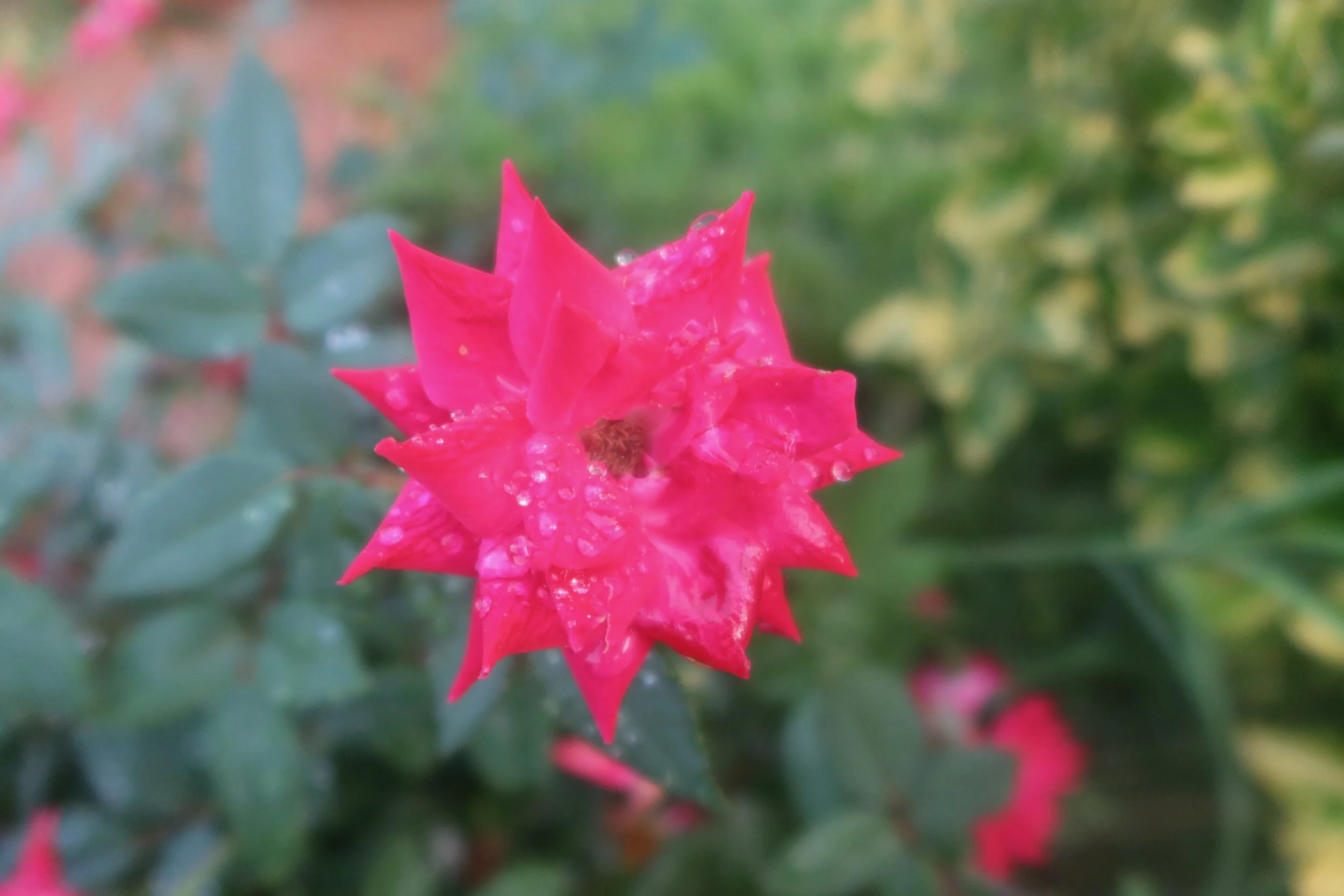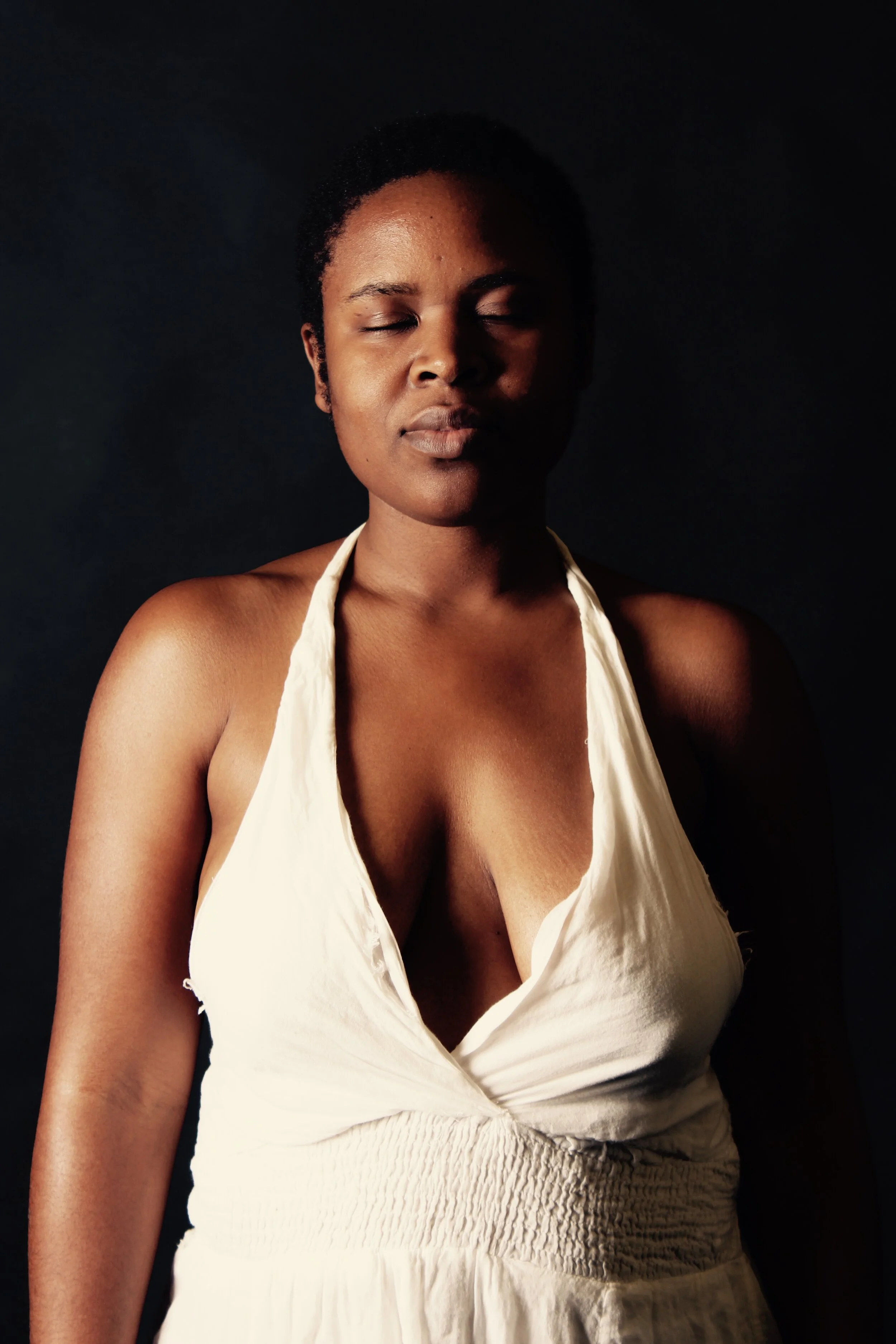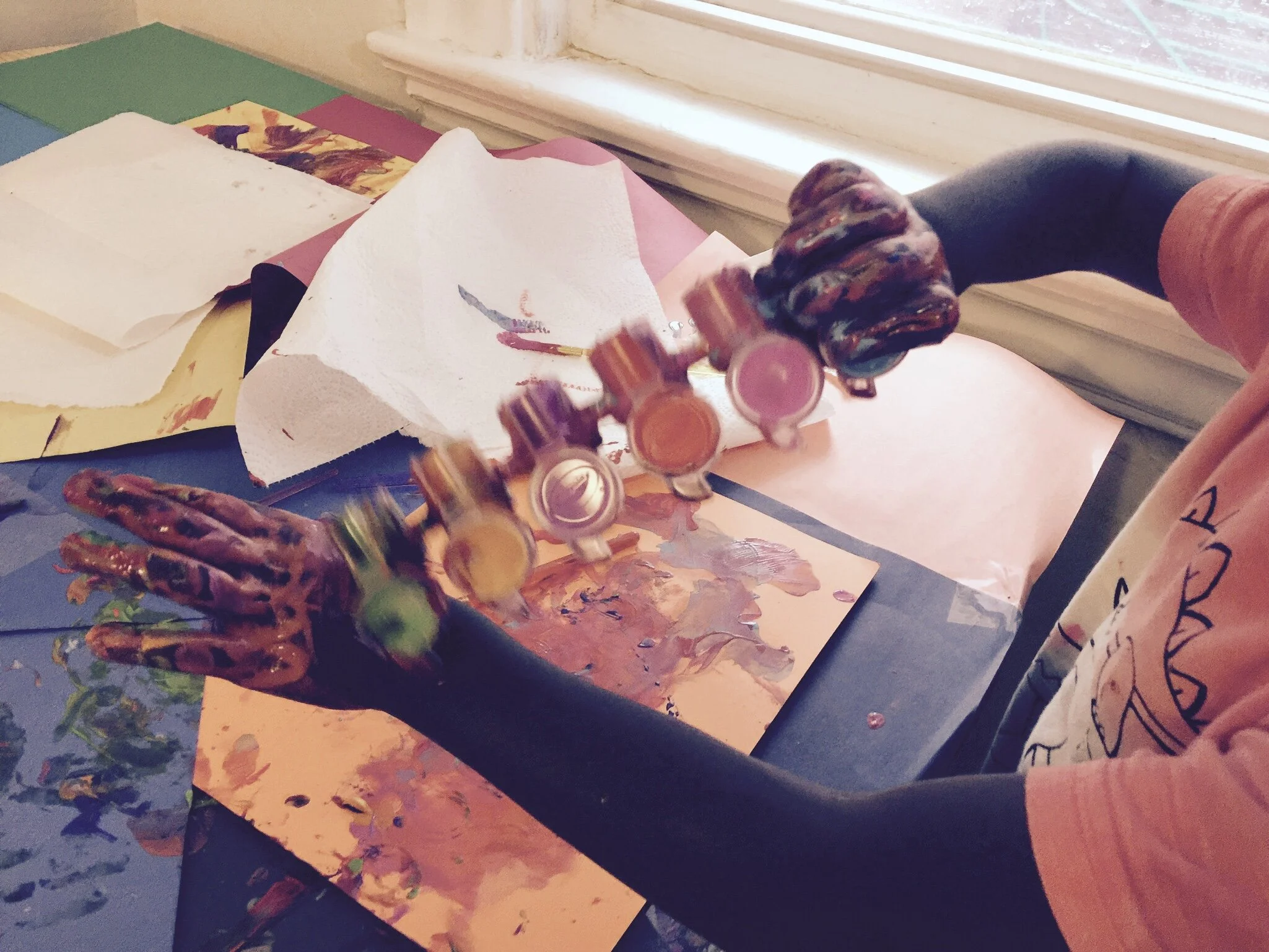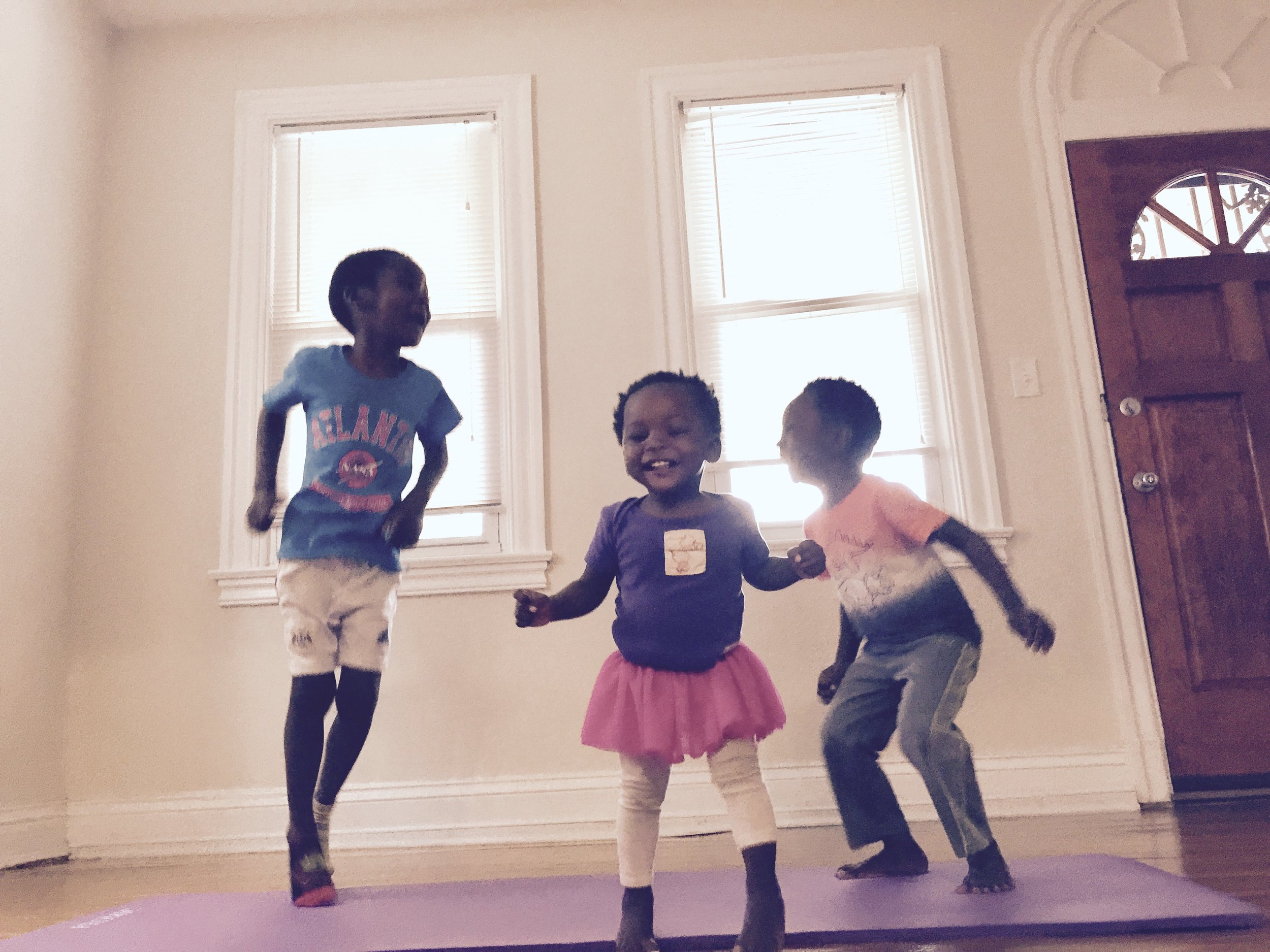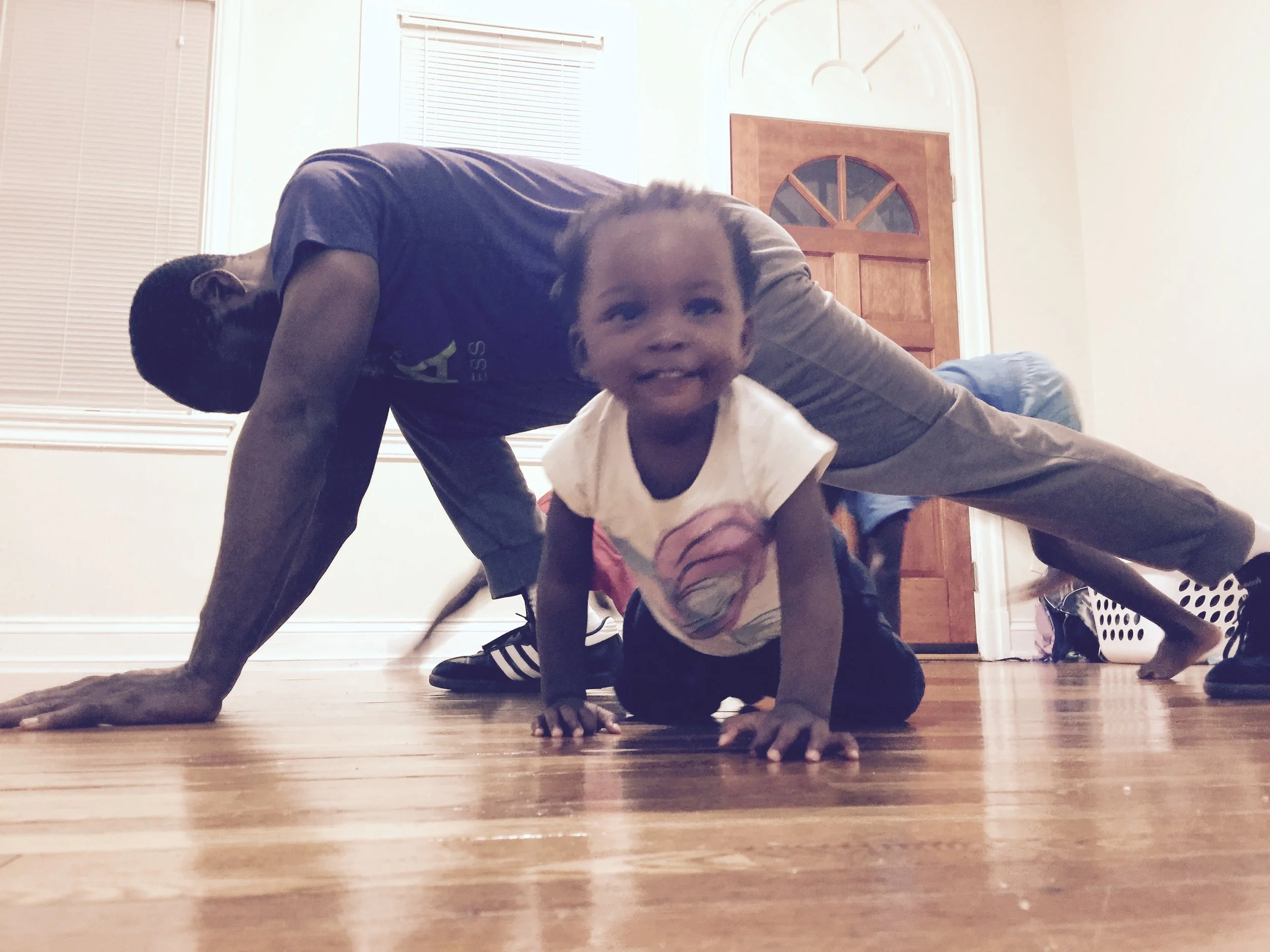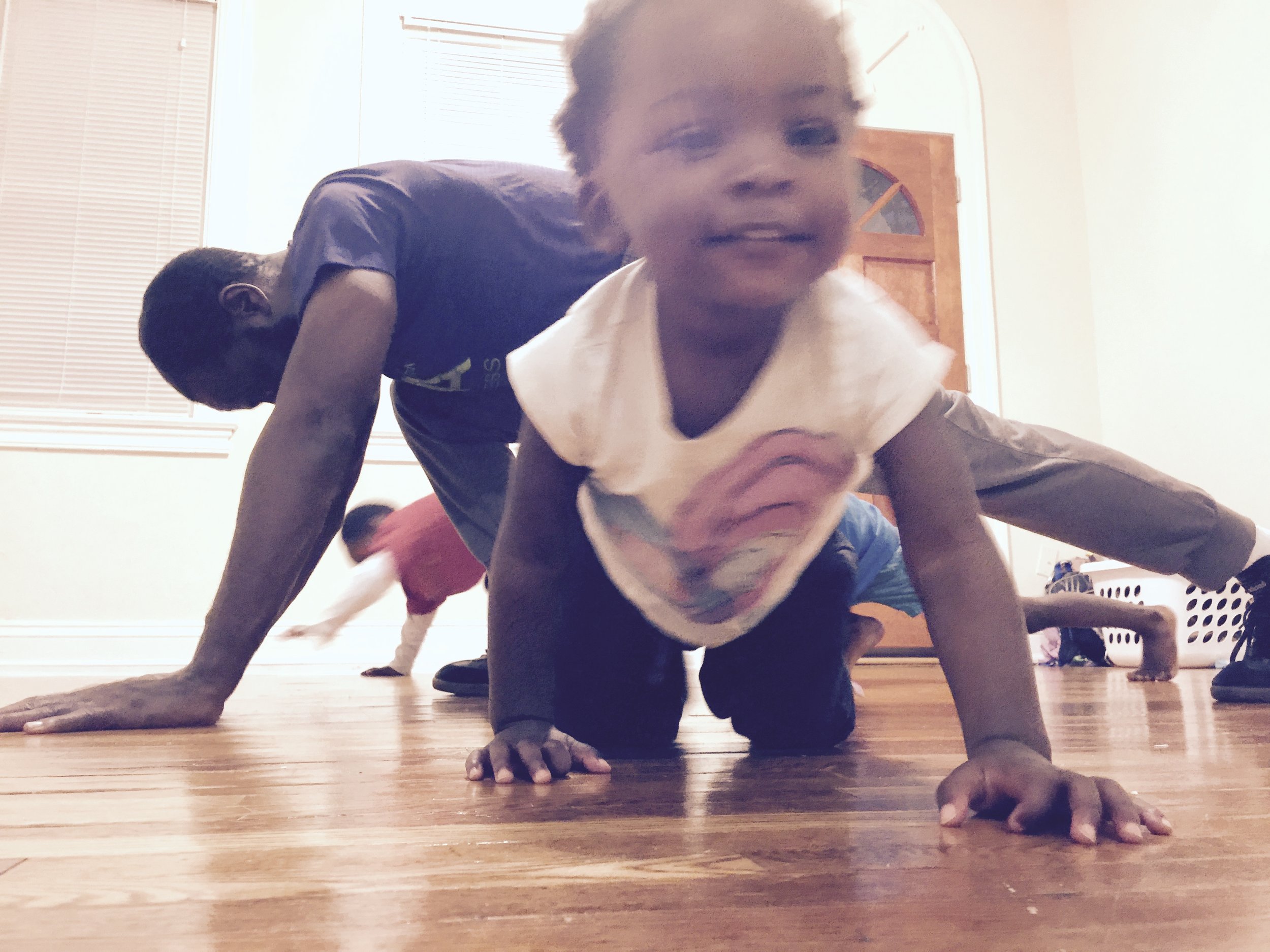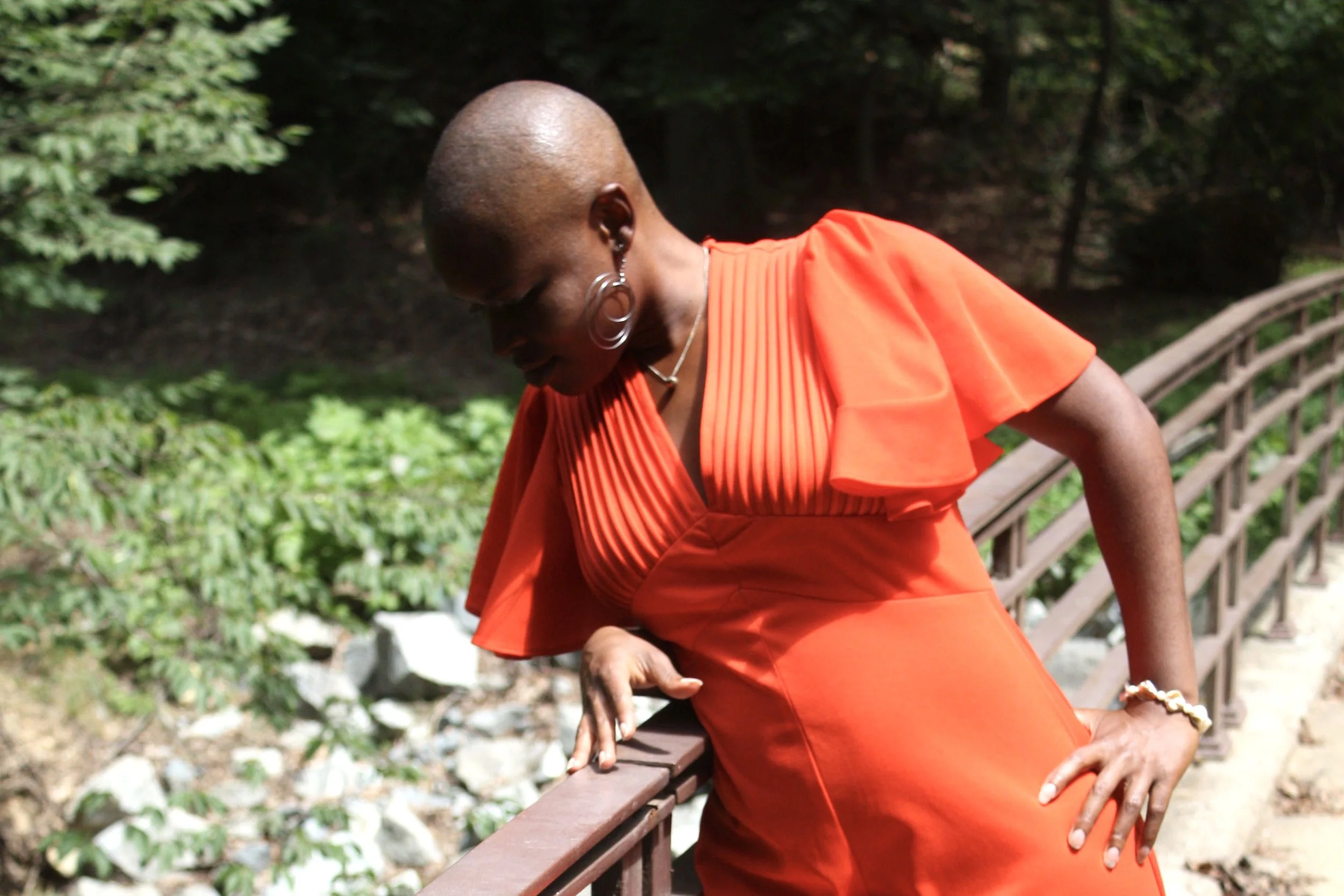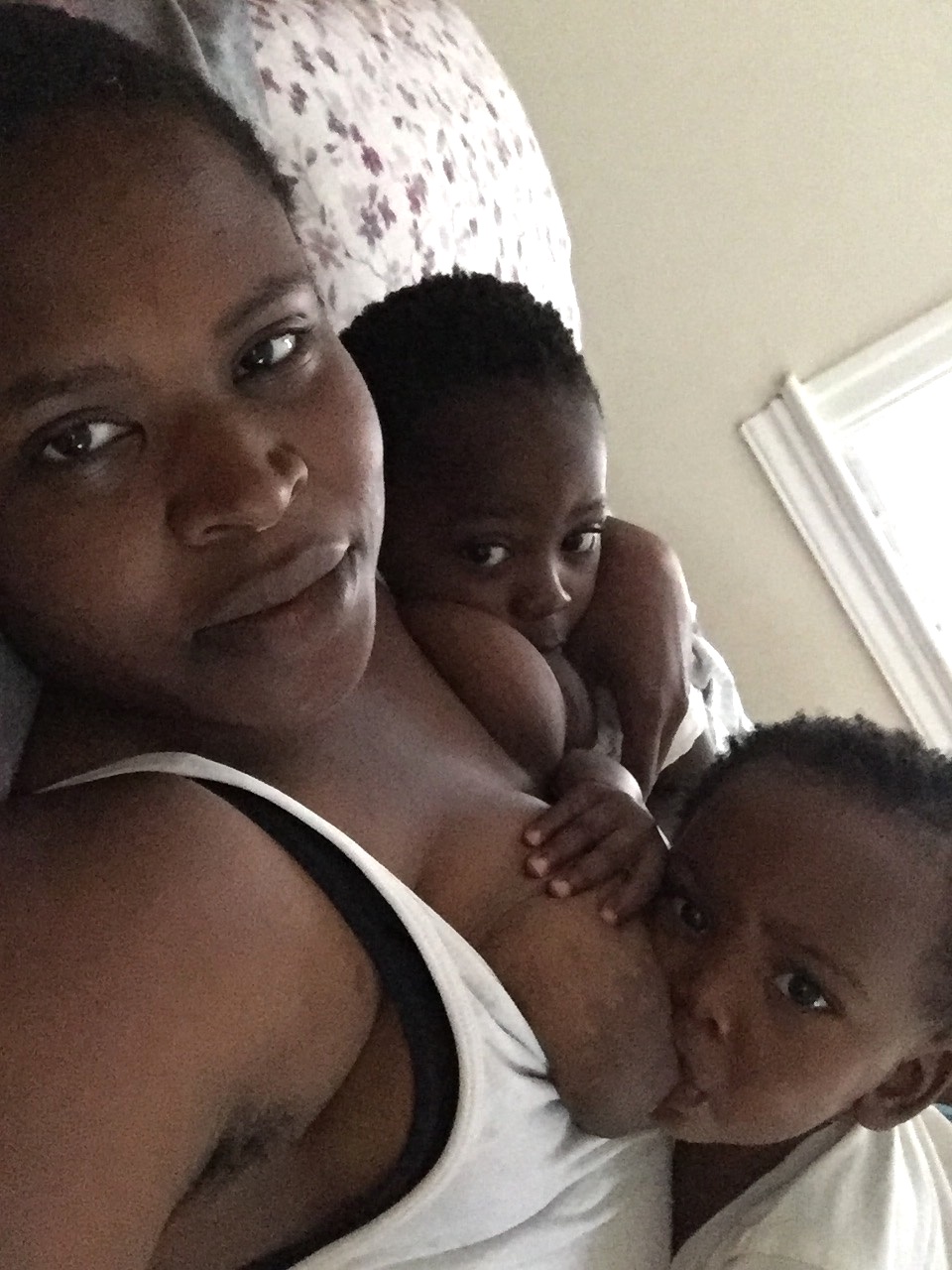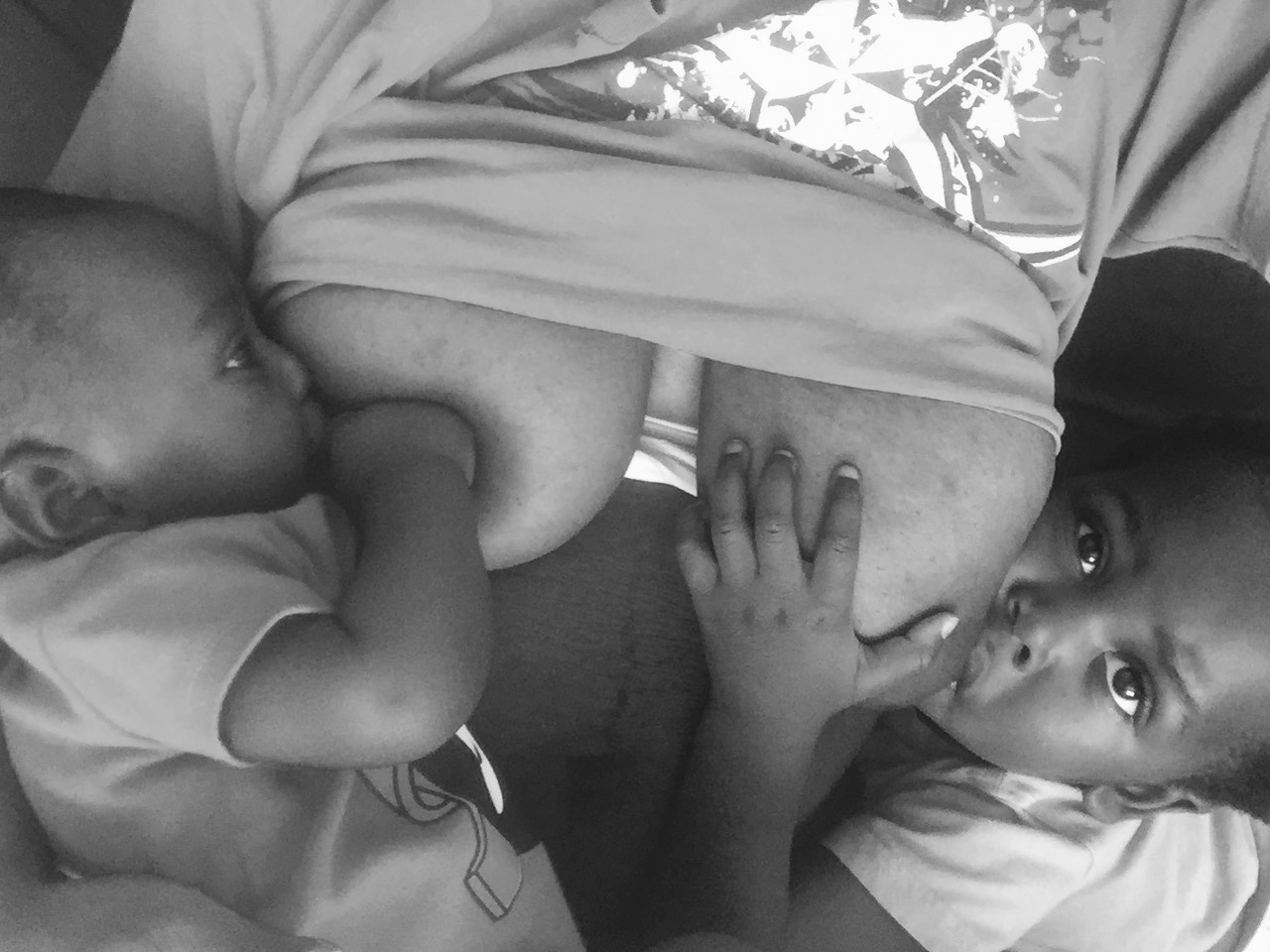I am mothering very differently from the way my mother raised me and my brothers. I think about our differences a lot as I navigate the ups and downs, the losses and the growths, the sweets and the bitters of my own journey as a mother. One of the things that stands out most about the way I grew up and the way the munchkins are growing up is that I am caring for my children nearly all 24 hours of the day, every day of the week.
This was not the case for me when I was a child. I didn’t spend the whole day, everyday, with my mother. And the more I unpack the implications of the separation—largely fostered by school and work rhythms—built into our routine as children, the more questions I have about what it means, about what it costs, that I choose to mother in such a radically different way.
My mother worked (and still works) as an engineer outside of the home my entire childhood. I was in daycare from infancy. I was on formula very early on because of a medical emergency that had my mother in the hospital weeks after I was born, and also because she had very little maternity leave. My children have been breastfed exclusively, with me nursing them at the breast, no pump, no bottles. All of their early nourishment has been from the countless hours of holding them, wearing them, carrying them around with me wherever I go so I can feed them from my body.
I went to public schools from kindergarten until starting college. In the elementary years we spent the after school hours at the library down the street from the school doing homework and waiting to be picked up (hopefully) by the time it closed. There were no cell phones or GPS trackers back then. On days they were running late we couldn’t call my parents to see if they were on the way or if we should just walk the six blocks to my grandparents’ house in the dark, the night lit up by the cars passing by and the street lights overhead. Our vulnerability as children didn’t occur to us. And my parents generally trusted that we were fine, and that they’d find us either standing in front of the library or at my grandmother’s dining room table eating a snack.
This was also an era before the after school market was in full effect. The local librarians were our unofficial minders for the post-school day, pre-dinner time hours from 3pm-6pm. Nowadays, parents who have children in school away from home often spend hundreds, sometimes even thousands, of dollars per year on before and after school care and programming. In this way we have something in common, as neither of us spent money on after school programs, but of course, for very different reasons.
In the summers the schedule only slightly changed. We were at camp in lieu of being at school, or at grandma’s house for the bulk of the day. For many years, when we were all younger, there was an annual weeklong family vacation to some place near a beach or an amusement park with my parents, my brothers, and my cousin.
My parents had two cars and I didn’t start taking public transportation until I began junior high school, and even then, it was just for going to and from school. All the weekend, holiday, and extracurricular activities were made possible by the convenience of riding in a car. My mother never had to manage meltdowns or snack distribution or rush hour crowds on the bus or the train. She mothered us privately in the comfort of her own vehicle.
My children experience transit more communally. We have to touch the world as we move through it. We are exposed to the greatest—nice old ladies who strike up friendly conversations with the munchkins—and the not so greatest—belligerent alcoholics who spill their 40 ounces all over mommy when the bottle explodes after being illegally opened up on a moving bus— of humanity as we navigate the city landscape on public transit. We are a car-free, “B.M.W.”—bus/metro/walk—family, and have been for most of the munchkins’ lives. Getting from here to there mostly happens in the public domain, with ample eyes and ears to witness—and judge— the loud, messy, chaotic uncertainties of mothering little people out in the world.
My overall description of my mother when we were children (and even still to this day), is that she was nice, kind, and gentle with us. She didn’t do a lot of yelling. She almost never used profanity. We didn’t get spanked as a form of discipline. My mother wasn’t strict. There weren’t hard rules, bedtimes, or fixed punishments. If we did something wrong, mostly there was a conversation, some extended dialogue space to work through whatever it was.
I’ve been thinking about reasons why my mother was mostly soft with us. One theory is that because she had regular intervals away from direct, hands-on, mothering labors, she didn’t experience burnout or the mental exhaustion that comes from fielding every need, every question, every tantrum that comes up in a single day. Our time together was generally limited to the early morning, the evenings and weekends when we weren’t at one of our activities. Our hours and minutes were scripted to an external system that was the norm for almost everyone else around us. In the few hours each day she had to spend with us, she was generally in good spirits, and we were the happy beneficiaries of all that goodness.
I try my best to be the soft, gentle mother. And on days when I have ample food (read: plenty of snacks for bribing…er…incentivizing…) in the house, and when there aren’t any major financial calamities on the horizon, and when I don’t have any sick little folks to tend to—I am very much that soft mother of my dreams.
But sometimes resources are tight, my patience is thin, the weather is dreary, the children are cranky/bored/tired/frustrated with the limitations of the moment. On these days I find I am more of the hard mother. I yell more. I restrict freedoms more. I am less playful. The normal volume of their ruckus from self-directed explorations seems too loud and I am asking for unreasonable amounts of quiet, calm, stillness. I have to demand food be eaten, or else people will be hungry asking for more food that we don’t have. I don’t believe in spanking them, but I may send too many munchkins to the corner too many times, or take away the tablet for too long on days when I feel overwhelmed by my labors and under-supported. I may deny too many requests for sitting in mommy’s lap. There may be too many tears that fall and too few hugs to soothe hurt feelings.
I don’t particularly like the hard mother, but I understand her now more than ever. As a child when I saw other friends’ moms who seemed very strict or mean, I was always thankful that my mother was so nice and laid-back with us. It never occurred to me that maybe the harshness in my friend’s mom’s tone was the culmination of her making it through the day as best she could. Maybe she was short on the rent and someone’s birthday was coming up. Maybe she was dealing with a difficult or abusive partner and deciding whether to stay or to leave. Maybe she was tired from being the only person on-call for all her children from sun-up to sun-up, and in this moment she’s got nothing sweet left to give. Maybe she only had beans and rice for dinner and she didn’t feel like dealing with the headache of feeding children who don’t want to eat the only food she had in the house.
Tucked cozily into the backseat of my parents’ cars, or my grandparents’ cars, or my aunts and uncles cars, I was oblivious to the ways in which having to commute on public transportation as a family alters your capacity to be gentle and receptive to the perpetual, insatiable needs so natural to day-to-day living with little people. Growing up in a relatively stable and privileged environment, I couldn’t appreciate that maybe that other mom who is snapping at her kids in the grocery aisle has only enough money to buy what’s in her cart, and she can’t entertain all these extra requests for candy and treats—even though she wishes she could—without feeling like she’s going to lose her mind. And after all the whining and complaining in the store, this same mom might be in for an epic tantrum as she hauls heavy bags and disappointed children home on a crowded bus. Meanwhile, we used to drop all sorts of extras into my mother’s shopping cart, and rarely did she ever make us take them out. Then we’d pile into the car, happily munching on our snacks of choice as my mother loaded groceries into the trunk.
I think my mother would have been a very different mother if she’d opted to be at home with us, if she’d chosen to homeschool us, and essentially be our full-time caregiver as well. I don’t know if I would have experienced her as a soft mother if she had been constantly juggling shifting resources and fluctuating finances. I don’t know how she would have managed having small children so close in age like mine are. We were all 4 and half to 5 years apart. She had years of recovery between each birth that I have yet to experience. I don’t know if she would have had the mental, emotional, or physical stamina to deal with mothering us every single moment of every single day—and still be so soft, gentle, and accommodating.
This reflection brings me deep pause, especially when I am having a rough day with the munchkins and I am wishing I could access the softness my mother had for me. This is when I have to acknowledge the implications of my choices, the weight of my world as it is. Within my very intentional practice to be home with my children, to facilitate their education through our family learning lab, to run our family business, to spend as much time together as a family—also exists the very real costs to this life. There are times I don’t have all I need to go gently through the day. There are moments when I’m too spent to be the soft mother. And I am getting better at celebrating the hard mother for showing up any way, even as she wishes she could be someone she can’t access right now. Because a hard mother is still better than no mother at all.
I like coming up with titles and labels for things. Sometimes I’ve played around with the term intensive mothering, meaning a mother who is with her children all day, and laboring for them and from her own body—breastfeeding/babywearing/homeschooling/being primary caregiver—all day and all night—co-sleeping/nursing through the night—too. I’m not settled on the terminology, but I think you get my meaning. In this current day reality when so few mothers in this country experience their children for extended periods of time beyond the first 6 weeks of life, this path I’m on is often fraught with loneliness, anxiety, and chronic depletion. It takes time to discover an authentic way to sustain your sanity, especially when those on the outside looking in perceive your children to be your biggest obstacle to sanity.
But no, I don’t believe that at all. In fact, I’ve spent these first 6 years of motherhood undoing the cultural programming that has tried so hard to convince me that peace of mind is only accessible through the calculated separation of mother and child. Rather, I’ve been experimenting—and stumbling, and crying, and feeling defeated at times—with a more collaborative process between a mother and her children. How can we craft a life that holds space for all our needs? How can I, as mommy, access more softness for my children and myself, without having to labor against myself—working on someone else’s clock—or outsource my children’s nourishment, primary care, and education to another person or system?
I don’t yet have all the answers to these questions. I still feel like I’m very much at the beginning of my mothering journeys, even though I’ve got some solid years in this work too. The deeper I grow as a mother, the more I appreciate my mother, and even the ways in which I am still very much like her. There are elements of her that have penetrated deeply into my practice. It’s just sometimes tricky to identify them because structurally our mothering realities are oceans, worlds, galaxies apart.
In the meantime, this concentrated unraveling of soft mother/hard mother has me being more intentional about finding and celebrating moments of being soft and gentle with myself, of choosing compassion and forgiveness over being so critical or angry about a mistake, of moving slowly through our days and not feeling pressured to keep up with speed of capitalism. The more I learn, the more I practice, the more I see that the softness I wish to share with my children begins with me.
As with most things I’ve been exploring as a mother, I don’t have a blueprint or guidebook to follow. In many ways I am mothering from scratch, feeling for my way through the unknowns as I grow. I know there are many moments of softness and gentleness that I already share with my children, as evidenced by their general happiness, bubbly energy, and enthusiastic curiosity about their world, the future, and the everything it will bring. I trust they are reflecting back to me the best parts of my mothering labors. I trust I’ll grow better, stronger, and softer with time.
